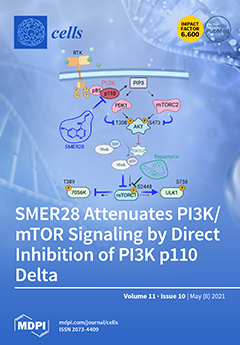Background: Breast cancer (BC) is the leading cause of death worldwide. The severity of BC strictly depends on the molecular subtype. The less aggressive hormone-positive subtype is treated with adjuvant endocrine therapy (AET), which causes both physical and psychological side effects. This condition
[...] Read more.
Background: Breast cancer (BC) is the leading cause of death worldwide. The severity of BC strictly depends on the molecular subtype. The less aggressive hormone-positive subtype is treated with adjuvant endocrine therapy (AET), which causes both physical and psychological side effects. This condition strongly impacts the adherence and persistence of AET among oncologic patients. Moreover, viral infections also constitute a serious problem for public health. Despite their efficacy, antiviral agents present several therapeutic limits. Accordingly, in the present work, we investigated the antitumor and antiviral activities of
Orobanche crenata Forssk. (
O. crenata), a parasitic plant, endemic to the Mediterranean basin, traditionally known for its beneficial properties for human health. Methods: The MTT assay was carried out to evaluate the cytotoxic effect of
O. crenata leaf extract (OCLE) on human breast cancer cells (MCF-7 and MDA-MB-231) and the primary HFF-1 cell line. The lactic dehydrogenase (LDH) assay was performed on MCF-7 cells to analyze necrotic cell death. The antioxidant effect of OCLE was evaluated by intracellular determination of the reactive oxygen species and thiol groups, by DPPH and ABTS assays. The antiviral activity of OCLE was determined against
Poliovirus 1,
Echovirus 9, Human respiratory syncytial virus,
Adenovirus type 2 and type 5,
Coxsackievirus B1 (CoxB1) and B3 (CoxB3),
Herpes simplex type 1 (HSV-1) and type 2 (HSV-2), and β-
Coronavirus by the plaque reduction assay. Results: The extract, after 24 h of incubation, did not affect MDA-MB-231 and HFF-1 cell viability. However, at the same time point, it showed a dose-dependent inhibitory effect on MCF-7 cells, with an increase in LDH release. OCLE exhibited free radical scavenging activity and significantly increased non-protein thiol levels in MCF-7 cells. OCLE effectively inhibited HSV-1, HSV-2, CoxB1, and CoxB3 replication. Conclusions: The overall results showed an interesting inhibitory effect of OCLE on both MCF-7 cell survival and viral replication.
Full article






